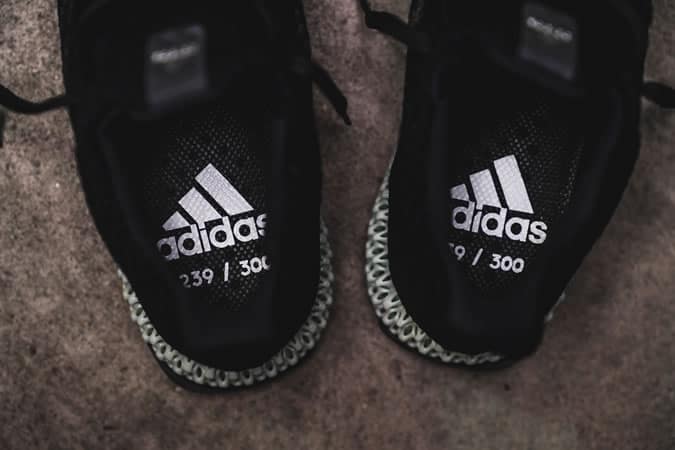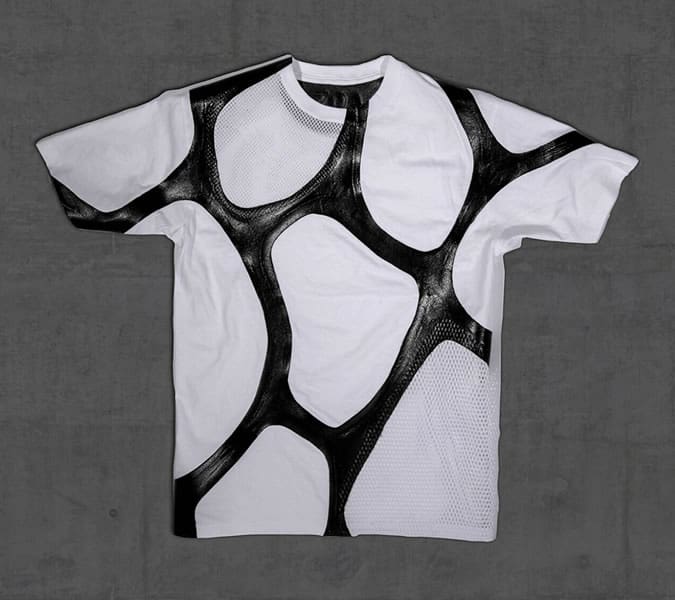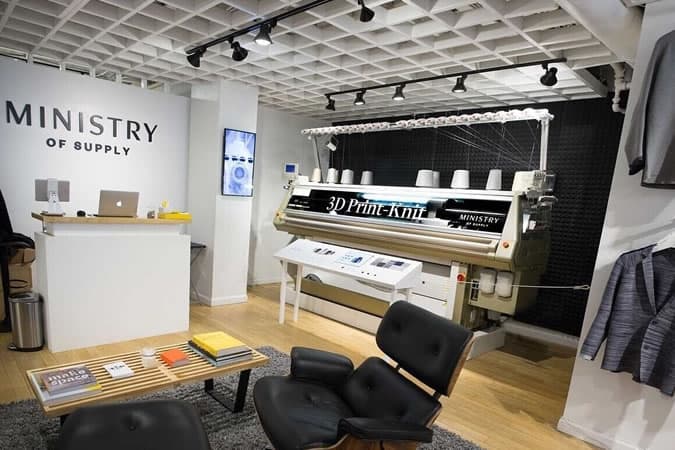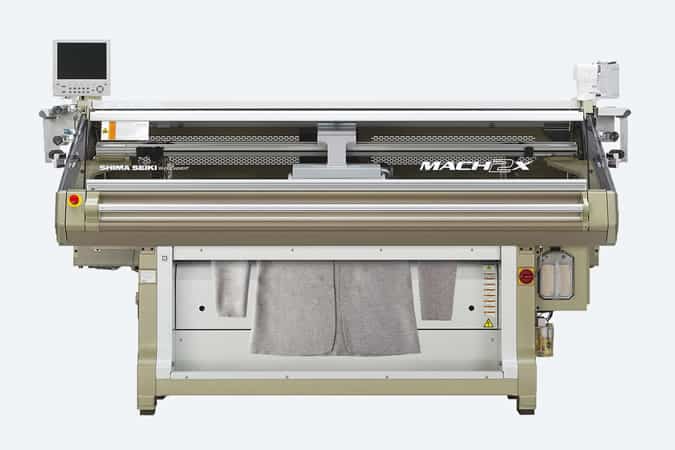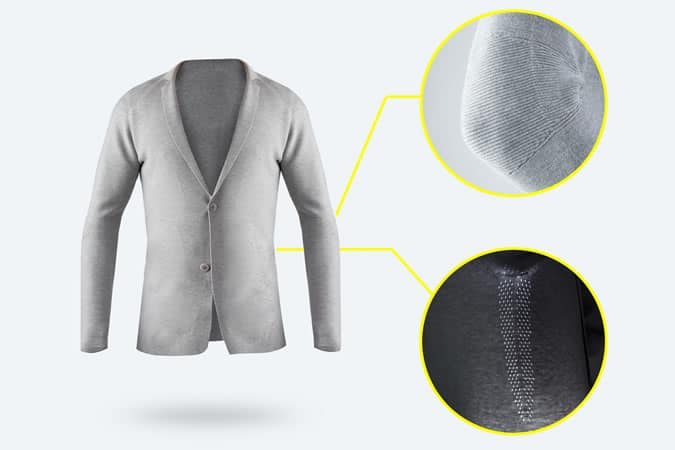To borrow a phrase from science fiction author and cyberpunk soothsayer William Gibson, the future is already here, it’s just not evenly distributed. Although you can buy the boots that Ryan Gosling wears in Blade Runner 2049 on Amazon. (They’re by US military supplier Bates.) Clearly, Gibson didn’t have Prime when he came up with that.
Dress shirts made from spacesuit material. Synthetic spider silk. Genuine leather grown in test tubes. These things might sound like they’re from tomorrow’s world, but they’re happening today. Some are even available to purchase. And they have the potential to revolutionise the fashion industry – even more than Gosling’s next costume change.
Below are five of the most paradigm-shifting and just plain astonishing concepts in menswear. Because where we’re going, we don’t need roads. But we’ll probably still need clothes.
4D-Printed Clothing
There’s a lot of hype about “3D printing” – the promise of a Savile Row fit on every item of clothing you own, and without the three-month wait because each bespoke piece could be printed right before your eyes. In reality, however, the technology is just glorified layering of 2D objects, with seams that have to be subsequently removed.
Giving the phrase “light on your feet” new meaning, Adidas’ Futurecraft 4D Runner trainer goes several steps further, utilizing technology developed by Silicon Valley start-up Carbon, which involves blasting a pool of resin with light that makes it harden. “Digital Light Synthesis” is smoother, stronger and anywhere from 25 to 100 times faster than conventional 3D printing, as demonstrated by the one-minute YouTube video of a solid object being pulled out of liquid like something that Sir Anthony Hopkins cooked up at Westworld. Okay, so the footage is seven times normal speed, but it’s mind-meltingly impressive nevertheless.
This is no concept design, either. Some 5,000 pairs of 4D Runners are slated to drop in December, but Adidas intends to make 100,000 by the end of 2018; more tantalizing still though is the possibility of sneakers being made to your foot’s unique specifications – kicking out discomfort, sizing dilemmas and stock shortages – while you wait. And you won’t have to wait that long, either. https://www.youtube.com/watch?v=4loUoDD-ex8
The Biker Jacket Grown In A Test Tube
If meat is murder, as Morrissey sung, then leather is lethal, too; even today’s synthetic versions, which are kind to animals, are not to the environment. So Brooklyn-based Modern Meadow, which began by trying to make a more humane burger, is now tinkering with living cells in order to create leather without the cow: to grow hide in test tubes, not fields. The ambition is to produce luxury-grade leather goods that cut down on water, food and methane emissions, as well as bloodshed.
The company is producing biofabricated collagen (the protein that makes up the vast majority of skin). It can be “farmed” in as little as two weeks, then it’s tanned and finished in a way that further minimises the environmental impact. The really clever bit is that the leather’s properties can be changed by editing the DNA of the cells to adjust the strength, elasticity or aesthetic. That means the technology can replicate that of any creature – cow, crocodile or (theoretically) woolly mammoth. It can also be grown to the required size, shape and even design.
If that conjures creepy images of your leather jacket floating in a vat like a decapitated head on Futurama, know that this is not science fiction. It’s happening now. Modern Meadow’s consumer-facing label is called Zoa and recently showcased its first products, including the T-shirt below, at New York’s Museum of Modern Art.
https://www.youtube.com/watch?v=VxsOHyJqoiM
Everyday Spacesuits
Performance clothing brand Ministry of Supply’s Apollo dress shirt is literally space age: it’s made with the same Phase Change Material that NASA devised to control astronauts’ body temperature.
“PCM works like a battery,” explains Gihan Amarasiriwardena, Ministry of Supply’s co-founder and president. “When you’re warm, the material absorbs heat, wicking it away from your body to cool you down. Then when your temperature drops, it releases that heat to warm you up.” Forget hot-and-cold flushes on your commutes and step back permanently from office battles over the thermostat.
Named after the cover of Charles Fraser-Smith, the real-life inspiration for James Bond’s Q, Ministry of Supply is a rare fashion brand to emerge from the Massachusetts Institute of Technology: the label’s other product launches include “3D” blazers constructed from a foam-like fabric that requires less tailoring engineering to give it structure, plus odour-controlling, coffee-infused “smart” socks.
“We’re inventors, not designers,” says Amarasiriwardena. “We’re comfortable being first with many of the products we release, testing and iterating and changing as needed. For more established, traditional brands, that risk and uncertainty isn’t ingrained in how they operate.”
https://www.youtube.com/watch?v=rIEVoCHj808
Superhero Fabrics
A common complaint about fashion is that nothing is built to last any more. That will change if a next-gen fabric makes it to the mainstream: synthetic spider silk. It’s already being used by some brands, including Adidas – its Biofabric prototype crep does whatever a spider silk can. Fellow Teutonic trailblazers AMSilk have genetically engineered E Coli bacteria to produce Biosteel, which once spun is light and elastic yet stronger than its namesake metal: a pencil-thick strand could catch a fully loaded, 380-ton Boeing 747. So at least on paper it should comfortably handle beaten-up gym gear or the hole worn into the crotch of your favourite jeans.
The fly in the artificial web is whether it’s commercially viable to manufacture in vast quantities: the price of the Biofabric kicks is yet to be announced, as is the release date; The North Face’s silk-enhanced Moon Jacket (below), made in conjunction with Japanese company Spiber, could cost as much as $1,000 if it ever actually goes on sale.
But California’s Bolt Threads, which employs pimped yeast and a sugar-fuelled fermentation process not dissimilar to brewing, claims that its $314 knitted ties will soon be much more affordable. It’s not just durability at stake here. With petroleum-based fibres such as polyester constituting 60 per cent of textiles, Bolt’s partnership with eco-conscious Patagonia is as natural as its output, which is chemically identical to the real thing – and, like Adidas’ “spider-knits”, fully biodegradable. https://vimeo.com/141755563



Interactivewear
Clothing can advertise your status, beliefs and emotions. But what if even a basic grey T-shirt could display emojis or status updates? If nothing else, it’d make Mark Zuckerberg’s uniform more interesting. Cute Circuit’s InfiniTShirt, which is also equipped with a camera, microphone, accelerometer and speakers, does just that – and it’s washable (by hand, but still).
“Fashion expresses so much about who we are,” says Ryan Genz, Cute Circuit’s co-founder and CEO. “In this sense, it’s an extremely efficient mode of communication. But there’s a kind of disconnect between our clothes and the rest of our culture, because fashion hasn’t embraced the digital aspects pervasive in so many other parts of society.”
Cute Circuit’s recycling plans and updatable apps help ensure that its “smart textiles” don’t end up in landfill. And wearable tech doesn’t just have applications for luminaries like U2, who wore light-up leather jackets on their 360 Tour. Project Jacquard, a collaboration between Google and Levi’s has created a denim trucker jacket aimed at cyclists that has woven circuits in the sleeves, allowing the wearer to control aspects of their smartphone without looking at the screen.
The jacket, on a limited US release for $350, recognizes gestures like taps and swipes in a similar way to a phone’s screen. It then communicates the messages to your phone via a Bluetooth dongle attached to the cuff button. The cyclist can get directions or play music without stopping to look at their screen.
Finally, wearable tech we’d actually wear.











